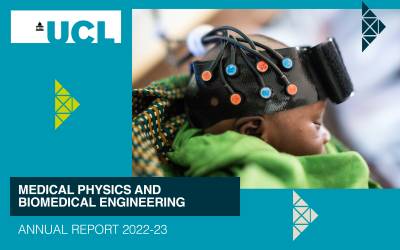Resources and introductory articles for biomedical optics
Introduction to biomedical opticsA series of articles on the basics of biomedical optics written by members of BORL, and a list of relevant review articles.
- Near-infrared imaging
- Near Infrared Spectroscopy
- Optical tomography
- Review papers and other useful references
Spectral Data
Some optical data which has been collected and published. Spectra of different skin types, water, haemoglobin and cytochrome are available.
Software
Some downloadable software which has been developed by members of BORL.
- Image reconstruction (TOAST)
- The BRAINCIRC modelling environment
- Functional optical signal analysis (fOSA) software
- k-Wave: A Matlab toolbox for the time-domain simulation of acoustic wave fields
Head models and data
Phantom manufacture
We have developed a wide range of solid, liquid and gel phantoms with optical, MR, x-ray and elasticity contrast. Please see below, or contact us for details.
Skin Optical Properties
Rebecca Simpson, Jan Laufer, Matthias Kohl, Matthias Essenpreis and Mark Cope
The aim of the study was to determine the absorption and transport scattering coefficient of the dermal and subdermal layers of human skin over the near infrared wavelength range which in our case was 620 to 1000 nm. The majority of data relates to caucasian skin but additional anecdotal data was also obtained from muscle and negroid skin. Human tissue samples were ex-vivo from either plastic surgery or post mortem examinations.
The measurement method used diffuse reflectance and transmittance single integrating sphere measurements of 1.5 to 2 mm thick samples using the integrating sphere in "comparison mode". The reflectance and transmittance measurements being matched uniquely to Monte Carlo simulations of diffuse reflectance and transmittance for a 2D table of absorption and transport scattering coefficients.
The method represents various refinements of a method started originally in the Department by Pieter van der Zee and later by Mike Firbank. Temperature sensitivity of the optical coefficients was evaluated over a 25 to 40 degrees Celcius range by placing the experimental apparatus and samples in a temperature controlled chamber (neonatal incubator). The results are suitable for use in more complex simulations of light transport in complex tissue models (e.g. Finite Element, Monte Carlo) involving skin structures, such as the head, abdomen, arm or leg.
Full description of the method, results and conclusions
- Simpson CR, Kohl M, Essenpreis M, Cope M (1998) Near infrared optical properties ofex-vivo human skin and subcutaneous tissues measured using the Monte Carlo inversion technique. Phys Med Biol 43:2465-2478.
- Laufer J, Simpson CR, Kohl M, Essenpreis, M, Cope M (1998) Effect of temperature on the optical properties of ex-vivo human dermis. (1998) Phys Med Biol 43:2479-2489.
Download optical properties
These files are in a "comma separated value" ascii format (csv) suitable for importing into most software packages such as Excel or SigmaPlot.
- Caucasian dermis optical properties (epidermis and dermis)
- Negroid dermis optical properties (epidermis and dermis)
- Caucasian subdermis optical properties (subcutaneous fat)
- Muscle optical properties
 Close
Close



